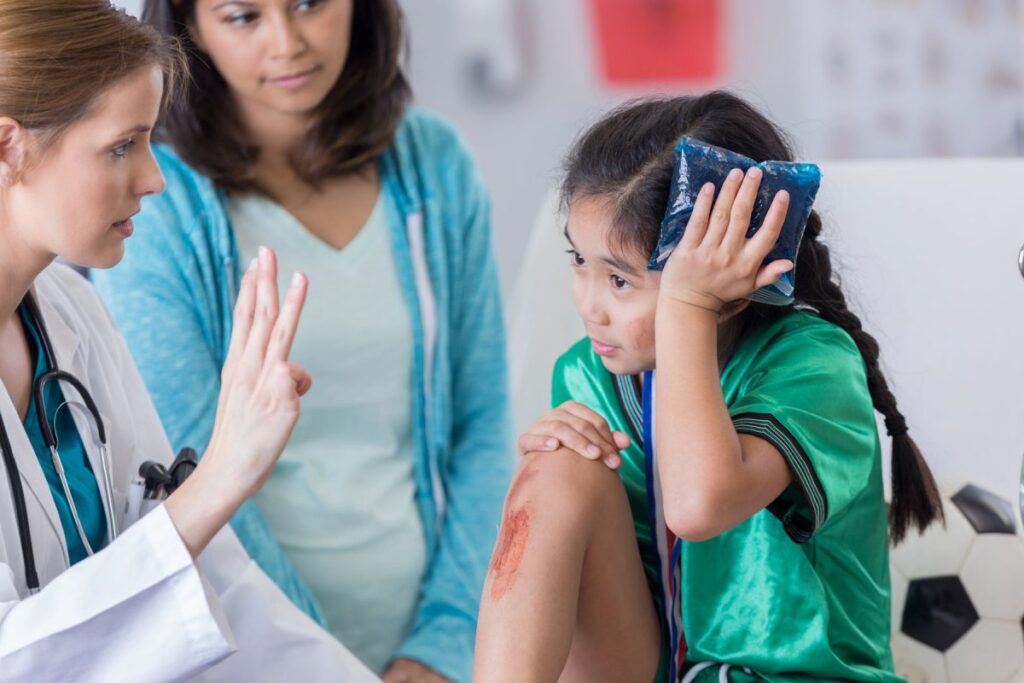Millions of Americans suffer concussions each year, and many endure symptoms for months or years afterward. But a study of 831 patients sent to top-level trauma centers for a concussion or mild traumatic brain injury (mTBI) found that only 44 percent saw a physician or other provider within three months of their injury, a critical period for care. In addition, only 47 percent received educational materials about their injury before they went home.
“The lack of follow-up after a concussion is concerning because these patients can suffer adverse and debilitating effects for a very long time,” said Seth Seabury, a lead author of the study and director of the Keck-Schaeffer Initiative for Population Health Policy at the USC Schaeffer Center for Health Policy and Economics. “Even patients who reported experiencing significant post-concussive symptoms often failed to see a provider. This reflects a lack of awareness, among patients and providers, that their symptoms may be connected to their brain injury.”
The study was published by JAMA Network Open. Data came from the ongoing Transforming Research and Clinical Knowledge in Traumatic Brain Injury study, or TRACK-TBI. Supported by the National Institute of Neurological Disorders and Stroke, the TRACK-TBI study has collected detailed information, including CT/MRI imaging, blood bio-specimens and detailed clinical outcomes, for more than 2,700 brain injury patients from 18 different U.S. sites.
“This finding demonstrates how NINDS’ support for observational clinical research in TBI, such as the TRACK-TBI study, can reveal gaps in patient care, which if corrected, may improve patient outcomes,” said Patrick Bellgowan, program director at NINDS.
Most cases of traumatic brain injury are classified as a concussion, or mild traumatic brain injury. However, the term “mild” can be misleading. People can have significant symptoms after concussion, such as migraines, cognitive issues, vision loss, memory loss, emotional distress or personality disorder.
“For too many patients, concussion is being treated as a minor injury,” said Geoffrey Manley, principal investigator of the TRACK-TBI project and co-author on the study. “This is a public health crisis that is being overlooked.
“If physicians did not follow up on patients in the emergency department with diabetes and heart disease, there would be accusations of malpractice,” added Manley, a neurosurgeon at the University of California, San Francisco (UCSF).
Rising Public Awareness of Traumatic Brain Injury
About 3.2 million to 5.3 million Americans live with long-term health effects of traumatic brain injury, according to the Centers for Disease Control and Prevention. TBI resulted in 2.8 million emergency department visits in 2013. The study estimates that annual direct and indirect costs of these injuries surpass $76 billion.
It’s a problem that has hit military members especially hard. Since 2000, nearly 380,000 active-duty service members have had a traumatic brain injury. Most of them are mild cases, according to the U.S. Department of Defense. Concussions have also drawn attention in football, and the high-profile issues have raised awareness of concussions as an important public health problem, Seabury said.
The researchers noted in the paper that persistent symptoms can be debilitating in many ways for patients. They are linked to an increase in medical expenses and — in some cases — job loss, homelessness and incarceration.
“The focus of concussion has been directed at a very narrow segment of the population — football players and professional athletes,” Manley said. But “everyone who falls off their bike, slips off their skateboard or falls down the steps needs to be aware of the potential risks of concussion.”
Some Patients with Positive CT Scans Received no Follow-Up
For the study, USC and UCSF scientists examined data on TRACK-TBI patients ages 18 and older who were enrolled in the study between early 2014 and mid-2016. The data included such medical information as CT scan results, injury characteristics and the patients’ admission score on what’s known as the Glasgow Coma Scale (GCS).
The GCS aims to rate the consciousness of patients who have suffered an acute brain injury. Scores range from 3 at their most severe to 15 at their mildest. Patients in the study had GCS admission scores of 13 to 15.
The patients completed surveys about their follow-up care at two weeks and three months post-discharge. The researchers found a gap in care even for 236 patients (28 percent of the sample) whose head CT scans indicated that they had a lesion, a sign of brain injury. Approximately 40 percent of those patients did not see a physician or other health provider three months after discharge, the researchers found.
Also, 279 patients (34 percent of the sample) had three or more moderate to severe post-concussive symptoms three months post-discharge, which should be examined by provider. But only 52 percent of them had a follow-up visit, the researchers found.
They acknowledged some limitations to the study, including that the patients had suffered concussions and in some cases, may not provide reliable recall of any follow-up care. They also noted the study sites—Level 1 trauma centers that are all affiliated with university hospitals—may not be nationally representative. However, the authors note that these hospitals would typically be expected to do a better job of providing care, suggesting the gaps in follow-up care for a patient in more underserved communities might be even worse than reported here.
“The study shows that we need to give patients and doctors the tools to better identify who should be going in for follow-up care,” Seabury said.
In addition to Seabury and Manley, other leading study co-authors were Étienne Gaudette and Dana Goldman of the USC Schaeffer Center, Amy J. Markowitz of UCSF, and Jordan Brooks and David Okonkwo of the University of Pittsburgh.
The study was supported by a grant 5U01NS086090-02 through NINDS at the National Institutes of Health. Seabury also received funding via an unrestricted grant to the Department of Ophthalmology at the Keck School of Medicine of USC from Research to Prevent Blindness in New York.
